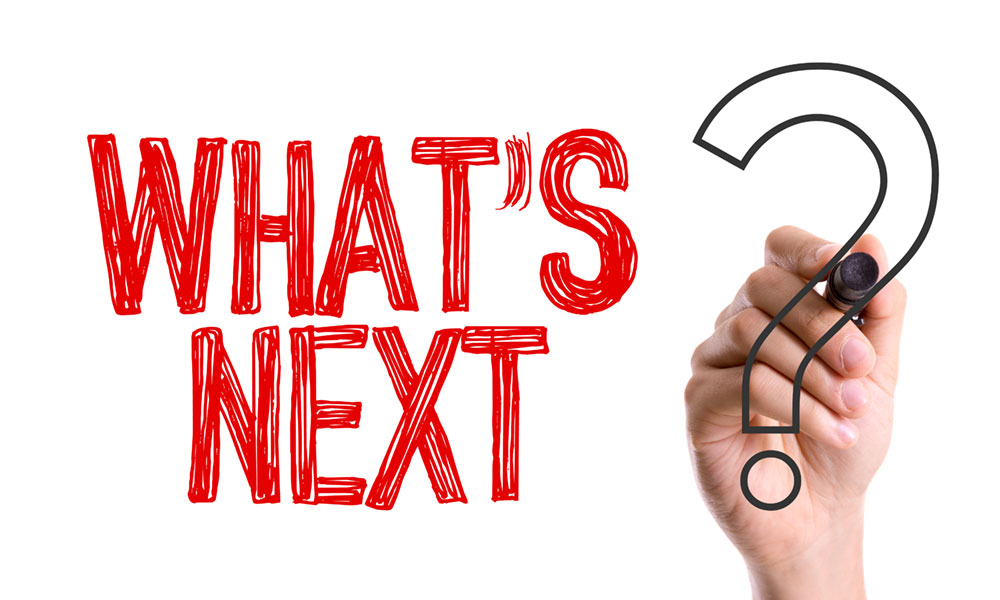By Deborah Jeanne Sergeant
As companies begin to get back to business, some aspects of how they work will be different from before the onset of the pandemic.
Here are 15 changes we may see:
1. Less in-person shopping
“I imagine the convenience will spark an increase in curbside pick-up and Instacart,” said Marcie Rivera, media relations specialist with Wegmans. “We expect demand will continue to grow.”
Because shoppers have become more adept at ordering their groceries ahead of time, it’s likely many will continue with this means of obtaining groceries, even after the threat of COVID-19 has diminished and consumers are comfortable shopping inside stores.
“I order more online than I used to,” said Paul Fauler, owner of The Coffee Connection in Oswego. “There is going to be a huge impact on malls. Individual stores might do better. People might still use stores for shopping for clothing or other items they want to see first.”
2. Increased personal space — No hand shaking
“I think awareness of the proximity to other people and how diseases spread will increase,” said Alice Hoatland, CPA and partner at Buffington & Hoatland, CPAs, PLLC, Auburn.
Just as with online shopping, many will continue with their habit of greater personal space long after COVID-19 restrictions are lifted. It’s not likely people will be shaking hands, conversing closely together or working from side by side desks for a long time.
3. More awareness of hygiene
“People will want to keep their hands washed and use sanitizer,” Hoatland added. “It’s going to depend upon whether the virus comes back and whether they’ll develop a vaccine that works.”
Force of habit may continue those two-minute handwashing sessions, use of alcohol gel and extra sanitizing measures, even as risk of COVID-19 dwindles.
4. More red tape for companies
“I see a lot more business regulations coming down the line about supplies in place and more policies,” Hoatland said. “It will be more cost to operate because of these things.”
Already, companies have put in place Plexiglas shields, tape on the floor to space shoppers and other measures to prevent spread of COVID-19. But stocking more supplies such as masks will likely become policies to keep organizations ready for another pandemic.
5. Increased preparedness and infrastructure
“We’ll come out of this better, like the Great Depression, 9/11 and the recession,” said John Timmerman, CEO of Good Monster and Jaxon Jovie in Clay. “The changes in policy of healthcare and crisis management will be so much better prepared. There’s a real opportunity for businesses everywhere to make change and improve efficiencies and really ride a rocket ship out of this if they’re aware, and open minded. Businesses may realize they’re losing their business in-house, but if they can use marketing to entertain people and add extra services or gifts, they can offer surprise and delight. They can improve their businesses if they invest money in growing their brand.”
It’s hard to deny that the pandemic blindsided many organizations in many ways. COVID-19 may prove a wake-up call for remaining in good communication with customers, developing greater efficiency, and improving cooperation internally and externally.
6. Less business travel
“A portion of companies may go back to traveling, but a lot of companies will keep up through technology,” Timmermand said. “Chatting services like Flak and Whatsapp allow us to send a quick message faster than email to a team member halfway around the world. Instant messaging services allow us to communicate in a split second. It reduces the need to fly to get something done.”
Virtual meetings will help companies save money and reduce the time employees would spend away from their families while traveling. Both will benefit.
7. More use of social media and online advertising
“Even with some of the bigger brands, they’ve upped their online presence,” Timmerman said. “You’re starting to see more ads local and global. Those are the ones that are going to thrive when we go back to somewhat the way they were before. It does take effort, staff, and some cost. When done the right way, it can bring a business to a whole new level.”
When times are tough, it may seem a good time to save money on advertising; however, digital advertising is cost-effective and reaches many demographics. It also makes sense to go digital since more people are shopping online than ever.
8. Improved websites
“It’s a great time for people to see if their website matches their in-person presence,” said Deb Coman, owner at Deb Coman Copywriting in Syracuse. “What does their website look like and what kind of emotion goes through? Does the website reflect what they do today or is it old?”
A refreshed website can help a company attract more customers and renew the interest of existing customers. Just the act of redoing a website can create buzz, as in posting, “Come visit our new website.”
9. More business philanthropy
“We’re seeing more goodwill and companies are elevating their brand into that level of service,” said Coman. “It does a lot for their brand. It’s well deserved. There’s no reason they can’t also sell, but they’re also getting recognized for the service component.”
The positive PR from philanthropy is golden. Companies that gave back to their communities during the pandemic may realize that their kind actions will pay them back with consumer loyalty.
“People want to help their neighbors and their community,” said Elizabeth Fallon Quilter, certified fund raising executive, owner Elizabeth Fallon Quilter, CFRE in Syracuse.
10. Smaller business meetings
“We used to be able to do conventions of 600 people,” said Jim Stocker, general manager at Holiday Inn, Liverpool. “We’re not sure if people will want to do conventions. These groups will be getting smaller.”
Just as with virtual business meetings, conventions may not be the way to go for many industries anymore. They may not see the benefit versus the risk of gathering that many people, and participants may remain leery of gathering.
11. Work from home. Greater flexibility in work arrangements.
“Businesses have to be prepared for future COVID-19 and other health-related quarantines and other challenges,” said Derek Vargas, co-founder and managing partner at Spark Orange in Syracuse. “This means digitally transforming your business, creating appropriate remote-work policies and procedures, and preparing your employees to be able to fully function from remote locations at any time. This can help to reduce overhead, keep your employees safe, and significantly reduce gaps in coverage by ensuring your teams are properly prepared.”
As companies realize that during the pandemic, working at home proved beneficial for employees and their bottom line, it makes sense that they may consider some sort of flex arrangement afterwards.
12. More local interest
“We’ll see increased shopping at local shops and sense of community support,” said John Halleron, senior business adviser at SUNY Oswego Small Business Development Center in Oswego.
Smaller, more familiar shops seem less threatening to consumers concerned about COVID-19 since they experience less foot traffic and the owner is often present, managing the business. These shops also offer the built-in positive aspect of keeping dollars in shoppers’ own community, as they realize more than ever the importance of supporting local businesses.
13. Increased gratitude
“People want to be healthy and have a better understanding and respect for the things we cannot enjoy today,” said Jim Loperfido, CEO at JGL Management Consulting Inc. in Auburn. “Once things calm down, we just may be a more patient society.”
When the usual sources of entertainment and many of the accustomed services and goods aren’t as available, thankfulness for them may ensue.
14. Business improvement
“I hate to use the expression, but we have been in a ‘paradigm shift’ for quite a while now,” Loperfido said. “The better business professionals have adapted, sometimes kicking and fighting. Those that refuse to see the change in habit our customers have been experiencing are not doing well. I can go on and on about this one. The best business people have some time in their life hit a wall. The jolt hurt so badly they made changes and survived. This pandemic is a wall and a half!”
Finding a way over, through, under or around is what’s important at this point.
15. Improved safety
“Greater attention to — and procedures for — ensuring employee and customer safety,” said Steve Chirello, owner of Chirello Advertising in Fulton.
No employers want to see their employees or customers in any danger. The next big thing may not be a pandemic; however, COVID-19 has drawn business professionals’ attention to their surroundings and any lapses in their policies and infrastructure.




